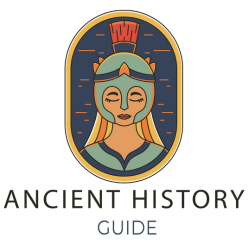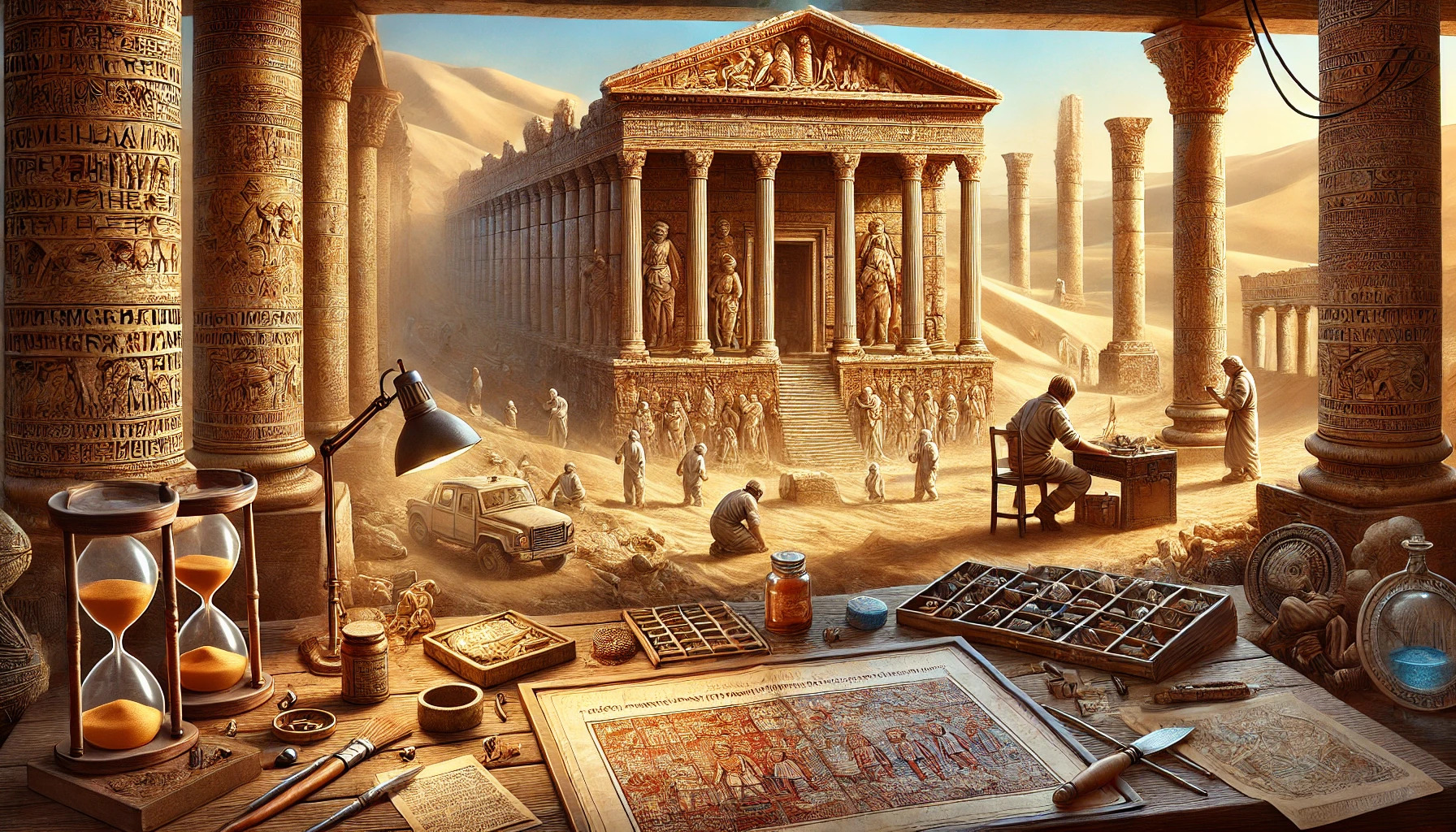The story of the Siege of Troy has captivated audiences for centuries, blending myth with elements of history. Many scholars believe that the events described in Homer’s epics, particularly the Iliad, have a historical basis that connects to actual conflicts in ancient times. This raises intriguing questions about the true nature of the war and the heroes involved.
Archaeological discoveries have suggested that a city resembling Troy was indeed besieged, providing a glimpse into a past that might not be purely fictional. The mix of legendary tales and historical facts makes the Siege of Troy a fascinating topic for anyone interested in ancient Greece.
As readers explore this article, they will uncover how history and mythology intertwine, shedding light on the real events behind one of the greatest stories ever told. The Siege of Troy stands not just as a tale of gods and heroes, but as a story rooted in possible reality.
Myth vs. History: Understanding the Epic
The Siege of Troy has sparked endless debate about the line between myth and reality. Many historians and scholars explore how Homer’s epic poem relates to historical events and archaeological findings. This section dives into the key aspects of the Trojan War and its place in both history and mythology.
The Iliad and the Trojan War: Fact and Fiction
Homer’s Iliad presents a narrative filled with vivid characters and dramatic events. It centers on a short period during the Trojan War, particularly focusing on Achilles’ anger and its consequences. While the Iliad is a work of fiction, it reflects real themes of honor and conflict that resonate throughout human history.
Many events and figures in the poem have sparked discussions about their historical accuracy. The various battles and fateful decisions depicted may have roots in actual events but were embellished over time. The line between legend and history can be blurry, making it essential to analyze the story critically.
Historical Evidence of Troy
Archaeological findings have revealed the existence of a city believed to be Troy. Excavations in northwest Turkey showcase layers of settlement that date back to the Late Bronze Age. These findings hint at a city engaged in trade and conflict, supporting the possibility of a historical Trojan War.
Ancient texts, including fragments of the Cypria, suggest that certain conflicts recorded may stem from real events. These accounts indicate a backdrop for the myth that could be tied to actual historical conflicts. As a result, Troy’s history can partially validate elements of the epic narrative.
Homer’s World: Storytelling and Tradition
Homer lived in a time where oral storytelling was prevalent. This tradition shaped how myths, like the Trojan War, were passed down through generations. It is important to recognize that storytelling often involved alterations, highlighting themes and morals important to society.
Homeric tales were likely influenced by earlier myths and local legends. These connections reveal how storytelling is a living tradition that evolves over time. The blending of history and myth creates a rich tapestry, making the understanding of these tales a fascinating journey into the past.
The Archaeological Search for Troy
The quest to find Troy has intrigued many archaeologists and historians. Significant figures like Heinrich Schliemann played crucial roles in this search. The findings at various excavation sites sparked debates about the historical accuracy of the Trojan War.
Heinrich Schliemann and the Discovery
Heinrich Schliemann, a German businessman and archaeologist, is often credited with the discovery of Troy. In the 1870s, he began excavating the hill of Hissarlik in modern-day Turkey. Schliemann was passionate about Homer’s Iliad and believed the city described in the epic was real.
His efforts initially uncovered layers of city remains. Among these, he claimed to find treasures that he believed belonged to Priam, the legendary king of Troy. His methods, although groundbreaking at the time, were often criticized for their lack of scientific rigor.
Excavations and Findings
Following Schliemann, many archaeologists continued to excavate the site. Excavations revealed multiple layers of settlement, indicating that Hissarlik was inhabited for thousands of years. Notable discoveries included pottery, walls, and remnants of fire, suggesting a violent end for some layers.
Subsequent digs, especially those led by man like Manfred Korfmann, provided more evidence. They uncovered the size and structure of the city, reinforcing the idea that it could be linked to the stories of the Trojan War. This connection to the epics sparked greater public interest and academic investigation.
Debates Over the Historical Troy
The identification of Hissarlik as the site of ancient Troy has not been without controversy. Scholars debate whether the findings directly correlate with the events of the Trojan War described by Homer. Various layers at Hissarlik differ greatly in date and structure, complicating the narrative.
Some argue that the lack of definitive evidence makes the historical connection tenuous. Others assert that the cultural artifacts found align closely with the time of the supposed war. This ongoing discussion highlights the challenges of linking archaeology with literary history.
Key Figures and Heroes
The Trojan War features several key figures and heroes who played vital roles in the conflict. Their actions and fates shaped the course of the war and influenced later stories and legends.
Achilles: Warrior Legend
Achilles is one of the most famous heroes of the Trojan War. Known for his incredible strength and skill in battle, he was nearly invincible, except for his heel, which became his downfall.
His rage and refusal to fight after a slight from Agamemnon were crucial turning points in the war. This anger led to significant losses for the Greeks, emphasizing the importance of his character in the epic.
Achilles eventually returned to combat after the death of his close friend Patroclus, showcasing his deep loyalty and profound grief. His final battles established him as a legendary figure whose legacy continues to resonate through literature and art.
Hector and Paris: The Trojan Side
Hector, the Trojan prince, stands as a symbol of bravery and honor. As the greatest warrior for Troy, he defended the city against the Greek forces and fought valiantly to protect his family and people.
Paris, Hector’s brother, is often seen as a more complex figure. His role in starting the war by abducting Helen sparked the Greek’s wrath. Despite his flaws, Paris bravely faced challenges, including a duel with Menelaus.
Both Hector and Paris represent contrasting aspects of heroism. Hector’s loyalty contrasts with Paris’s more self-interested actions, highlighting the diverse motivations of the heroes in the saga.
Kings and Commanders: Agamemnon and Others
Agamemnon, the leader of the Greek forces, played a critical role in the war. As the king of Mycenae, he united various Greek armies to attack Troy. His decisions often influenced the war’s direction, for better or worse.
Other notable commanders include Odysseus, known for his cunning, and Ajax, celebrated for his strength. Each commander brought unique skills to the battlefield.
These leaders faced internal conflicts, including power struggles and personal rivalries. Their complex relationships added depth to the narrative, showcasing that heroism involves more than just valor in battle.
The Role of the Gods
In the narrative of the Siege of Troy, the gods play a critical role, influencing events and the characters’ fates. Their involvement adds layers of complexity to the human struggles and highlights the intertwining of divine and mortal realms.
Divine Intervention in Homer’s Epic
In Homer’s Iliad, divine powers frequently intervene in human affairs, often swaying the war’s outcome. For instance, Athena supports the Greeks, while Aphrodite champions the Trojans in their quests.
When Hector faces Achilles, it’s not just a battle of strength
Warfare and Combat
The Siege of Troy was marked by various tactics and strategies that shaped the outcome of this legendary conflict. Both sides used distinct weapons and armor, reflecting their cultures and battlefield needs.
Trojan War Tactics and Strategies
The tactics employed during the Trojan War revealed a mix of cunning and brute force. The Greeks utilized a strategy of siege warfare, attempting to surround Troy and cut off supplies. They often engaged in direct assaults, trying to breach the city walls through persistence and skill.
Deception played a key role as well. The Greeks famously used the wooden horse to trick the Trojans into allowing them inside the city. This tactic showcased that clever strategies could sometimes triumph over sheer strength.
Armor and Weapons
The armor and weapons used in the Trojan War highlight the era’s advanced military technology. Greek warriors typically wore bronze armor, which offered good protection while remaining relatively lightweight. Helmets often had crests and cheek guards, making soldiers look more intimidating.
As for weapons, they used swords, spears, and bows. The spear was a primary weapon in hand-to-hand combat, while archers provided cover from a distance with various arrows. The diversity of equipment allowed soldiers to adapt to different combat situations effectively.
Cultural Impact
The Siege of Troy has significantly influenced literature, art, and modern storytelling. Its themes, characters, and events continue to resonate through various forms of creative expression.
The Epic’s Influence on Literature and Art
Homer’s Iliad and Odyssey are foundational works in Western literature, drawing from the events and characters of the Trojan War. These epics explore deep themes such as honor, love, and betrayal. Their characters, especially Achilles and Hector, symbolize complex human emotions and values.
Throughout history, many writers and artists have drawn inspiration from these stories. Notable examples include Virgil’s Aeneid, which follows the aftermath of the war, and countless works in both poetry and prose. The imagery and storytelling techniques from these epics also influenced future generations of artists, from ancient ceramics to modern paintings.
Modern Interpretations and Adaptations
Today, the story of the Siege of Troy appears in various modern adaptations, spanning films, novels, and plays. For instance, films like Troy (2004) reinterpret the ancient tales for contemporary audiences. These adaptations often explore familiar themes while adding new perspectives.
In literature, authors continually reimagine characters and events from the Trojan War. Modern novels often focus on the untold stories of lesser-known figures like Briseis or Cassandra, adding depth and complexity to the original narratives. This ongoing interest underscores the Siege of Troy’s lasting cultural significance and its ability to inspire creativity across different mediums.

